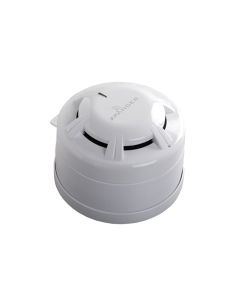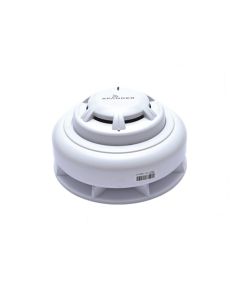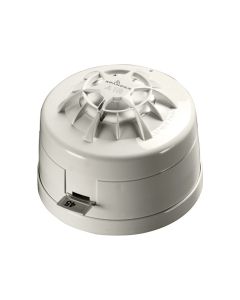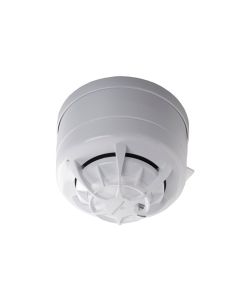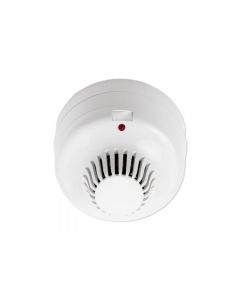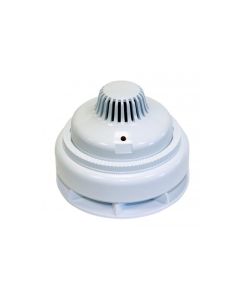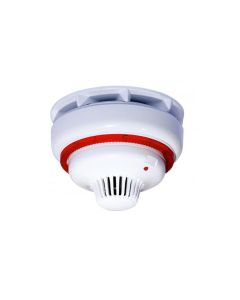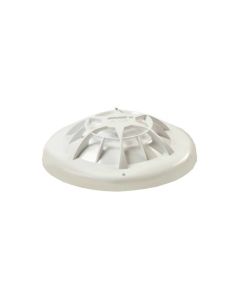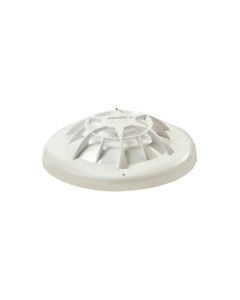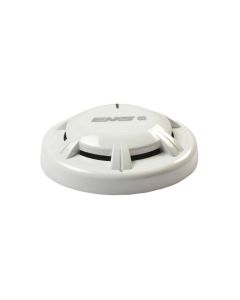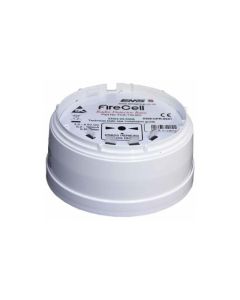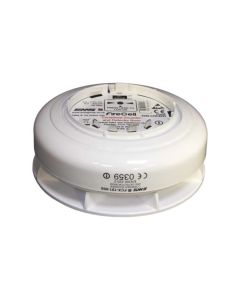We use cookies to make your experience better. To comply with the new e-Privacy directive, we need to ask for your consent to set the cookies. Learn more.
Over 30 Years Experience
We get it right, first time, every time!
Collect from our Trade Counter
Monday to Friday 8.30am - 5pm
Fast Delivery TIMES
Orders Dispatched Same Day*
Wireless Detectors
Wireless detectors are provided buy Firesense, including smoke, heat, and multi-sensor options, sourced from trusted manufacturers to ensure compliance with UK and international safety standards. These devices deliver the performance and reliability needed to protect lives and property while offering the convenience and adaptability of wireless technology.
Wireless detectors are an essential component of modern fire alarm systems, offering advanced fire detection capabilities without the need for extensive cabling. Using secure wireless communication to connect to the fire alarm control panel, these detectors provide reliable protection while significantly simplifying installation and maintenance. Wireless detectors are particularly well-suited to environments where wiring is impractical, such as heritage buildings, temporary structures, or spaces with complex layouts. They also offer flexibility for future system expansions or modifications, making them a preferred choice for many building managers and installers.
How Wireless Detectors Work
Wireless detectors operate using secure radio frequency (RF) communication to transmit signals to the fire alarm control panel. When a fire is detected—whether through smoke, heat, or a combination of factors—the detector sends an immediate signal to the control panel, which then triggers the alarm system. This seamless communication ensures a rapid response to fire hazards while maintaining the simplicity and flexibility of a wireless setup.
Each wireless detector is equipped with an internal power source, typically a long-life battery, which allows it to function independently of the building's electrical system. The control panel monitors the status of all connected detectors, including their battery levels and signal strength, ensuring that any issues are promptly identified and addressed. This proactive monitoring enhances the reliability and safety of the entire system.
Types of Wireless Detectors
Smoke Detectors
Wireless smoke detectors are designed to identify the presence of smoke particles in the air, providing early warning of potential fires. These detectors use optical technology to detect visible or invisible smoke, making them suitable for various environments. Optical smoke detectors are ideal for detecting smoldering fires. Wireless smoke detectors are commonly installed in offices, schools, residential buildings, and other spaces where early detection is crucial.
Heat Detectors
Wireless heat detectors respond to significant increases in temperature, making them an excellent choice for environments where smoke detection may not be practical, such as kitchens, boiler rooms, or workshops. These detectors are designed to activate only when temperatures reach a specified threshold, reducing the likelihood of false alarms caused by steam, dust, or cooking fumes. Wireless heat detectors provide reliable protection in challenging conditions while maintaining the simplicity of a wireless setup.
Multi-Sensor Detectors
Multi-sensor wireless detectors combine smoke and heat detection technologies into a single device, offering enhanced accuracy and versatility. By analysing multiple factors simultaneously, these detectors can reduce false alarms while ensuring a rapid response to genuine fire hazards. Multi-sensor detectors are ideal for mixed-use spaces or environments where conditions vary, such as hotels, shopping centres, or large office buildings.
Advantages of Wireless Detectors
Wireless detectors offer numerous advantages over traditional wired systems, starting with their ease of installation. Without the need for extensive cabling, these devices can be quickly and efficiently installed, reducing labour costs and minimising disruption to building operations. This is particularly beneficial for retrofitting existing buildings, where running new cables may be impractical or disruptive.
Flexibility is another key advantage. Wireless detectors can be easily repositioned or added to the system as the building's layout or fire safety needs change. This adaptability makes them an excellent choice for buildings with evolving requirements, such as modular offices or multi-purpose facilities. In addition to flexibility, wireless detectors provide reliable performance. Using advanced RF communication technology, these devices ensure secure and interference-free signals between detectors and the control panel. Many wireless detectors are also equipped with fail-safes, such as redundant communication paths and tamper detection, to ensure continuous protection.
Maintenance of wireless detectors is straightforward. With battery-powered operation, these devices eliminate the need for external power sources or wiring checks. The control panel monitors battery levels and alerts building managers when replacements are needed, ensuring that the system remains fully operational.
Applications for Wireless Detectors
Wireless detectors are suitable for a wide range of applications, from small residential buildings to large commercial complexes. In heritage buildings, where preserving the structure and aesthetics is essential, wireless detectors provide a non-invasive solution. Similarly, in temporary structures such as construction sites or event venues, wireless detectors offer a portable and easily configurable option for fire safety.
In modern office buildings and schools, wireless detectors provide the flexibility needed to adapt to changing layouts or uses. For healthcare facilities, where downtime can have serious consequences, wireless systems allow for quick installation and upgrades with minimal impact on daily operations.
Why Choose Firesense?
At Firesense, we understand the importance of reliable, adaptable, and compliant fire safety solutions. Our range of wireless detectors includes smoke, heat, and multi-sensor options to suit a variety of environments and applications. By sourcing products from trusted manufacturers, we ensure that our customers have access to the highest quality devices that meet all regulatory requirements.
Our team of fire safety experts provides guidance at every stage, from selecting the right detectors to advising on installation and maintenance. Whether you are installing a new wireless fire alarm system or upgrading an existing one, Firesense is here to help you build a solution that delivers dependable protection and peace of mind.
In addition to our extensive product range, we offer ongoing support to ensure the long-term performance of your wireless detectors. Regular testing and maintenance are essential, and our team is available to provide advice and resources to keep your fire safety system in top condition.
Conclusion
Wireless detectors are a modern, efficient, and highly adaptable solution for fire detection. By eliminating the need for extensive cabling, these devices simplify installation, reduce costs, and provide the flexibility needed to meet changing fire safety requirements. With options for smoke, heat, and multi-sensor detection, wireless detectors offer reliable protection across a wide range of environments. At Firesense, we are proud to offer a comprehensive range of wireless detectors backed by expert support and guidance. Browse our selection today and let us help you create a wireless fire safety system that meets your needs. With Firesense, you can trust in the quality, performance, and reliability of every device, ensuring the safety of your building and its occupants.

